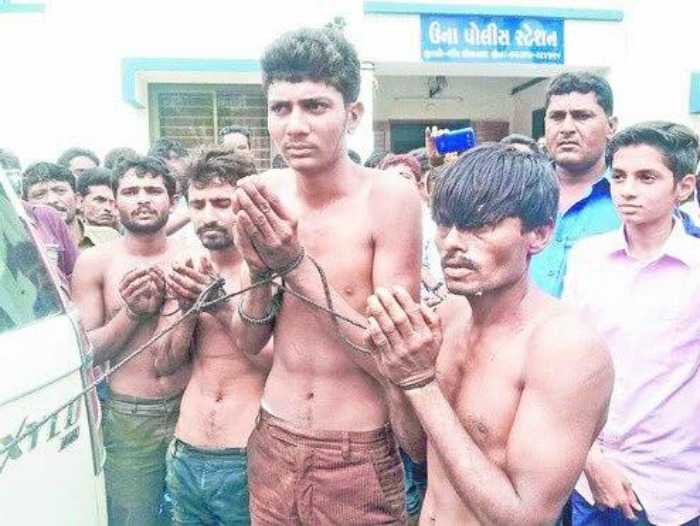
How Much Dalits Suffered Because of Hindu Caste System
Here is a list of brutal casteist practices, many of which can still be seen in various parts of the country.
Source – Following excerpt is from “Manu and the Shudras” book by Dr Ambedkar, appeared in vol. 12 of Babasaheb Ambedkar’s Writings and Speeches published by the government of India. Download Dr Ambedkar’s books in different languages from here.
It might be argued that the inequality prescribed by Manu in his Smriti is after all of historical importance. It is past history and cannot be supposed to have any bearing on the present conduct of the Hindu. I am sure nothing can be greater error than this. Manu is not a matter of the past. It is even more than a past of the present. It is a ‘living past’ and therefore as really present as any present can be.
That the inequality laid down by Manu was the law of the land under the pre-British days may not be known to many foreigners. Only a few instances will show that such was the case.
Under the rule of the Marathas and the Peshwas the Untouchables were not allowed within the gates of Poona city, the capital of the Peshwas between 3 p.m. and 9 a.m. because, before nine and after three, their bodies cast too long a shadow; and whenever their shadow fell upon a Brahmin it polluted him, so that he dare not taste food or water until he had bathed and washed the impurity away. So also no Untouchable was allowed to live in a walled town; cattle and dogs could freely enter but not the Untouchables.
Under the rule of the Marathas and the Peshwas, the Untouchables might not spit on the ground lest a Hindu should be polluted by touching it with his foot, but had to hang an earthen pot round his neck to hold his spittle. He was made to drag a thorny branch of a tree with him to brush out his footsteps and when a Brahman came by, had to lie at a distance on his face lest his shadow might fall on the Brahman.
In Maharashtra, an Untouchable was required to wear a black thread either in his neck or on his wrist for the purpose of ready identification.
In Gujarat, the Untouchables were compelled to wear a horn as their distinguishing mark.
In Punjab a sweeper was required while walking through streets in towns to carry a broom in his hand or under his armpit as a mark of his being a scavenger.
In Bombay, the Untouchables were not permitted to wear clean or untorn clothes. In fact, the shopkeepers took the precaution to see that before the cloth was sold to the Untouchable it was torn and soiled.
In Malabar, the Untouchables were not allowed to build houses above one storey in height and not allowed to cremate their dead.
In Malabarthe, Untouchables were not permitted to carry umbrellas, to wear shoes or golden ornaments, to milk cows or even to use the ordinary language of the country.
In South India Untouchables were expressly forbidden to cover the upper part of their body above the waist and in the case of women of the Untouchables, they were compelled to go with the upper part of their bodies quite bare.
In the Bombay Presidency, so high a caste as that of Sonars (gold-smiths) were forbidden to wear their Dhoties with folds and prohibited to use Namaskar as the word of salutation.
Under the Maratha rule, anyone other than a Brahmin uttering a Veda Mantra was liable to have his tongue cut off and as a matter of fact the tongues of several Sonars (goldsmiths) were actually cut off by the order of the Peshwa for their daring to utter the Vedas contrary to law.
All over India, Brahmin was exempt from capital punishment. He could not be hanged even if he committed murder.
Under the Peshwas distinction was observed in the punishment of the criminals according to the caste. Hard labour and death were punishments mostly visited on the Untouchables.
Under the Peshwas Brahmin clerks had the privilege of their goods being exempted from certain duties and their imported corn being carried to them without any ferry charges, and Brahmin landlords had their lands assessed at distinctly lower rates than those levied from other classess. In Bengal, the amount of rent for land varied with the caste of the occupant and if the tenant was an Untouchable he had to pay the highest rent.
These facts will show that Manu though born some time before B. C. or sometime after A. D. is not dead and while the Hindu Kings reigned, justice between Hindu and Hindu, touchable and untouchable was rendered according to the Law of Manu and that law was avowedly based on inequality.





It is not shame for untouchable but shame for hindu . vikram